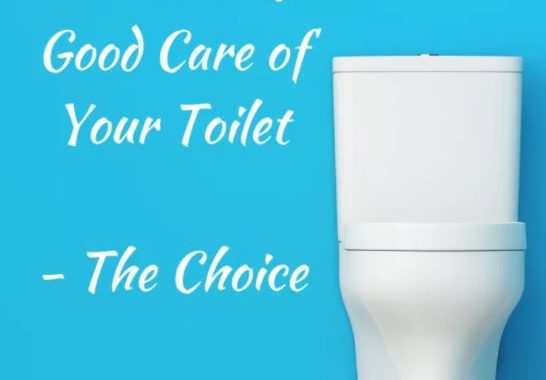 Let’s hear it for that underappreciated household fixture – the toilet! Without this modern convenience, our homes would certainly be less … well … convenient.
Let’s hear it for that underappreciated household fixture – the toilet! Without this modern convenience, our homes would certainly be less … well … convenient.
Learning How to Take Good Care of Your Toilet “facilities” is surprisingly simple, considering the important role (no pun intended) they play in our day-to-day life. Just follow these easy steps.
- Teach your household to follow the basic rule of proper toilet maintenance: “The only good paper is (regular-thickness) toilet paper.” Disposable diapers, wipes, paper towels, feminine products, and even ultra-thick, extra-strength TP can get in there and clog up your drains. Place a handy covered bin in the bathroom for disposal of these items. Even better, consider using more eco-friendly substitutes.
- Don’t try to flush leftover food, either. Large, hard particles can get stuck, while grease and oils will tend to harden and contribute mightily to drain clog. Besides, all that unnecessary flushing will add up to many gallons of wasted water over time. Instead, compost what you can and trash the rest.
- Replace any old-fashioned water hog type toilets with the low-flow variety, to save even more H2O. If you’re still using a toilet manufactured prior to 1994, it may be quaffing as much as 7 gallons per flush. Compare that example of conspicuous consumption with today’s water-sparing models, at only 1.6 gallons per flush.
Click HERE to see our range of The Choice WCs.
- Install a toilet lid lock if you have small children in your family. Besides its vital function of helping to keep your sweet babies safe, this handy device will prevent mischievous toddlers from conducting their own brand of science experiments. (“What happens if I make Teddy go bye-bye down the big-kid potty?”
- Equip your bathroom with a convenient plunger. Unlike the standard model made for use in flat bathroom or kitchen sinks, a dedicated toilet plunger is manufactured with a flange – picture a broad rubber lip — that seals to the curved shape of your toilet bowl outlet for the most effective plunging. If the toilet threatens to overflow, bail out some of the water with a bucket or similar container so you have room to plunge.
- Add a new step to your routine toilet cleanup. Before you begin to scrub, run your dry cleaning rag around the base of toilet, right where it meets the floor. If the rag becomes damp, you’ve just received an early warning signal that your sealing ring is no longer effective and requires prompt re-caulking before you end up with major waterworks.
- Green clean your toilet with a brush and some white vinegar. Spray on this inexpensive natural liquid to both disinfect and deodorize without any toxic chemicals that would pollute our water and the air of your bathroom. A vinegar soak is ideal for removing lime scale that may have collected on the inner surface of your toilet’s bowl or tank. However, if your bathroom floor or counter-top happens to be made of marble or other stone tile, avoid splashing the vinegar on it, to prevent etching.
- Boost white vinegar’s natural cleaning power with baking soda in a 2:1 ratio when your toilet is particularly grimy. (And sprinkle in a few drops of your favorite essential oil to sweeten the atmosphere.) Beware, though! These 2 “super cleansers” are often followed up with a chaser of boiling water. Great move when you want to clear your shower drain, but overly hot water can crack the toilet bowl’s porcelain.
Reference: Care2 Healthy Living












You must be logged in to post a comment.